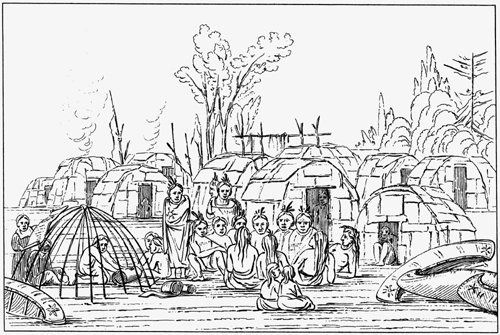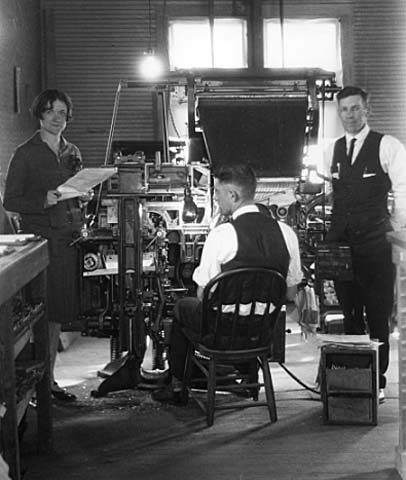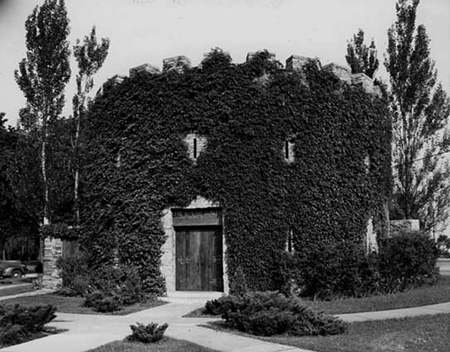What is in the final environmental impact statement for the Coldwater/ Bureau of Mines property near Fort Snelling in Hennepin County, Minnesota? How does it provide a basis for the Department of Interior to select Preferred Alternative D [3], including the cleanup the property by the federal government and its retention in federal hands? And how does it deal with the issues about Coldwater Spring as a place of traditional cultural importance for Dakota people?
To know the answers to those questions—and the meaning of those answers—requires context and information. One of the problems of dealing with any bureaucracy which operates in an environment of controversy has to do with the flow of information. To understand how such agencies make their decisions requires access to hidden information, buried reports, and phantom memos. Every decision has a hidden history that has to be understood before you can begin to figure out the decision. Should you choose to try to learn this context, may the force be with you.

For ten years the Department of Interior, through the National Park Service and its Twin Cities entity, the Mississippi National River and Recreation Area (MNRRA), has been trying to extricate itself from Coldwater Spring and the problems associated with the ownership of 27 acres of controversial land and abandoned buildings. For supporters of the preservation of Coldwater Spring, including those who believe that it is a sacred and culturally important place for Dakota and other Native people, the process has been difficult to follow, in part because they have not been given all the information needed to understand it. The Park Service and MNRRA have managed information carefully, sometimes concealing it or giving it out only after the fact, after decisions were made.
The initiation of an environmental review process and the beginning of work on a draft Environmental Impact Statement (EIS) in 2005, seemed to suggest a change in tone, the possibility of a real flow of information that would lead to a collaboration between supporters of preservation and a governmental agency seeking to do the best for an environmental, cultural, and historic resource. The release of the draft EIS (DEIS) in 2006 tempered enthusiasm a little bit. The DEIS provided a lot of information. But a great deal of the cultural and historic information was inaccurate and incomplete. And using the incomplete information the Park Service announced that it did not believe Dakota people and others who insisted on the importance of Coldwater Spring to Native people. In doing so, the Park Service rejected the finding of its own contracting experts who found that Coldwater Spring was a TCP, a traditional cultural property of importance to Dakota people.

During a 90-day comment period in the fall of 2006, many people submitted comments to correct the record compiled by the Park Service about the cultural nature of the property, on the theory that given the right information the agency would revise the EIS and the conclusions to which it came. Adequate knowledge about the historical and current importance of Coldwater Spring and the surrounding area is not just about correcting the historical record or assuring that competent history is done. It is also about assuring that the right decisions are made about Coldwater Spring.
Many supporters of Coldwater preservation are united in their belief about the environmental importance of the spring and beauty of the spring area. They can agree that the buildings should be removed, preferably at government expense, and the area restored environmentally. Under the DEIS issued in 2006, the best alternative to achieve that purpose was Alternative D. However Alternative D had several alternatives built into them. These alternatives were not numbered but to better understand them, they should probably have been. Under Alternative D, once the property was cleaned up by the federal government, the alternatives are:
[1]. The property would be transferred to a university or nonfederal entity—including Indian tribes—without conditions.
[2]. The property would be transferred to a university or nonfederal entity—including Indian tribes—with conditions.
[3]. The property would be retained by the federal government, including being held as trust land for Indian tribes.
It is important to know that supporters of Coldwater preservation did not all agree on who the ultimate owner of the property should be. Some wanted the property to be a public park. Others wanted Indian ownership. In 2006 several Dakota tribal entities asked for the federal government to transfer the property to them.
Was it a mere coincidence that, given the Dakota beliefs about the importance of the spring and the proposals from Dakota tribes to acquire the property, that the National Park Service rejected its own contractor’s documentation that the spring was a Traditional Cultural Property for Dakota people? The tenaciousness of the Park Service’s position on this point and the lack of explanation for it in the DEIS suggested instead that the Park Service simply did not want to give Dakota people any leverage in any negotiations about the ultimate fate of the Coldwater property. For the Park Service to acknowledge what Dakota people said about the spring and what its own experts said about the spring, and what many other people outside the federal government said about the spring would have given Dakota people, a moral and perhaps, legal claim to the spring that the Park Service simply did not want to recognize.
It was hard to figure out, from the DEIS, the Park Service’s own rationale for the decision it had reached about the TCP status of Coldwater. There was, of course, a phantom memo, that shed some light on the issue. Midway through the DEIS comment period a memo was written by an unnamed person in MNRRA, explaining some of it. The memo was issued to a few people at the time, though it was not a part of the DEIS, which meant that the rationale for the Park Service decision about the TCP status of Coldwater was not supported in the DEIS by any facts or reasoning. The memo is still preserved on the MNRRA website in pdf from, although it is hard to find.
Some of those who reviewed the DEIS did read the phantom memo and commented on it in their comments to the Park Service in November 2006. At that point, at the conclusion of the DEIS comment period, there was optimism that given more information, the Park Service would rethink its decision in revising the DEIS, something that has been expected to happen for the last three years.
Finally, after more than three years, on December 11, 2009, the Park Service released the Final Environmental Impact Statement on the Coldwater/ Bureau of Mines property. Although it had taken a long time, the Department of Interior seemed closer to a decision about what would happen to Coldwater Spring. A year earlier, in the waning days of the Bush administration, Lyle Laverty, Acting Assistant Secretary for Fish, Wildlife, and Parks, had written several memos (one of them was another phantom memo, which has not yet been made public) stating that the department had identified the Preferred Alternative for the EIS process for Coldwater as Alternative D, which would include the cleaning up of the property and D[3] the subsequent ownership and management by MNRRA.
Subsequent to that finding there had been a further comment period and discussion of the process of restoration of the property, including an open house on February 23, 2009, at which Dakota people had described again the importance of the spring and the surrounding area to Dakota people. Subsequently, the Park Service drafted a Memorandum of Agreement to govern the restoration process for the spring area.
The announcement that Alternative D was the preferred alternative and that long-term ownership of the property would remain in the possession of the federal government was a signal of what to expect in the final EIS (FEIS). It would be expected that the FEIS would include the weighing of alternatives and evidence to show why the Preferred Alternative was preferred.
It was also expected that the Park Service would weigh in further on the question of the importance of the spring for Dakota people either changing its analysis to acknowledge new information or justifying further the Park Service insistence that that Coldwater Spring was not a TCP for the Dakota people.
Again the reason for expecting a more detailed analysis of the TCP question was not a simple matter of having a corrected historical record about Coldwater Spring, but was relevant to the question of the Preferred Alternative. If the Park Service was planning to reject proposals for the property by Dakota tribal groups and claims by the Dakota people about the importance of the property, one would expect some justification of that in the FEIS.
What is in the FEIS and how does it deal with the issues about Coldwater Spring as a Dakota place and how does it provide a basis for the Department of Interior to select Alternative D [3], including the cleanup the property by the federal government and its retention in federal hands?
More about that next time.








